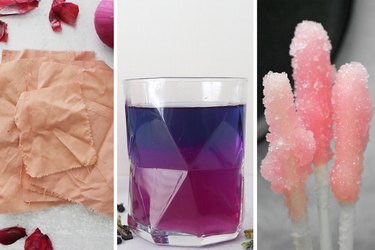
You might have noticed that we're big fans of food. From sweet dessert recipes to copycat dishes, we adore it all! And now that back-to-school season is upon us, we've also got science (well, food science) projects on the brain. After all, science fairs are timeless traditions in many schools—and if your kids plan to partake, you're probably looking for some science project inspo. Why not make this year's project something delicious?
To help you put a foodie spin on the task, we've compiled three simple food science project ideas: color-changing lemonade, fabric dye made of red onion peels and homemade rock candy. Each tutorial also includes a short explanation on the science behind the project, so your little ones will have a starting point for their research.
Video of the Day
Who knew science could be so delicious?
Video: Rock Candy, Color-Changing Lemonade & More Fun Science Projects
1. Color-Changing Lemonade
Things You'll Need
Dried butterfly pea flowers
Water
Fresh lemons (or bottled lemon juice)
Tea strainer
White sugar (optional)

Tip
You can purchase dried butterfly pea flowers at natural health markets, tea shops and on Amazon.
1. Make butterfly pea tea
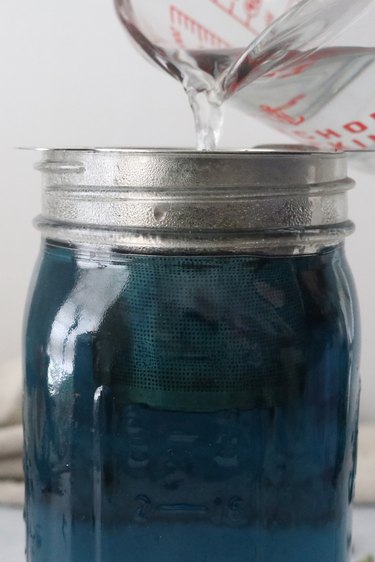
Prepare 1 Tbsp. butterfly pea flowers for every 16 oz. cup water. Steep flowers in hot water for 2 to 3 minutes. Let cool for 15 to 20 minutes, then refrigerate until cold.
Tip
After steeping the tea, add sugar to taste.
2. Pour tea into glasses

Divide butterfly pea tea into clear glasses.
3. Add lemon juice
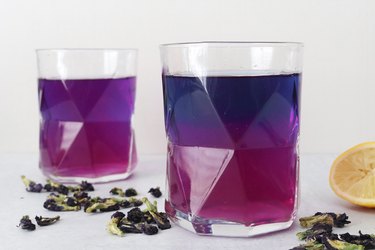
Squeeze fresh lemon juice directly into tea. If you don't want to fish out the seeds or don't have a lemon juicer, use bottled lemon juice instead. The deep blue color of the butterfly pea tea will turn purple. If you add even more lemon juice, it will take on a pink shade. Just like magic!
Color-Changing Lemonade Science 101
This project is perfect for lessons about pH. Here’s why: Butterfly pea flowers contain compounds called anthocyanins. These compounds give the flowers their blue-purple color. When you make tea with the flowers and add an acid (such as lemon juice), the tea's pH decreases. (Acids have a lower pH, while bases have a higher pH.) When this happens, anthocyanins become reddish, transforming the tea from blue to purple. The more acid you add, the more red the tea becomes, resulting in a pretty pink drink.
2. Food Scrap Fabric Dye
Things You'll Need
Water
Pot
Red onion peels
White 100% cotton fabric
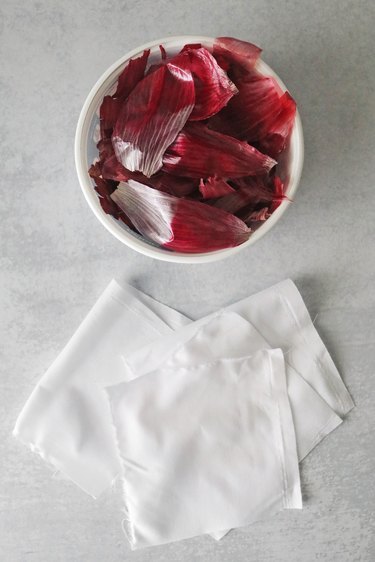
Tip
Dye from food scraps might stain your pot. To avoid ruining good kitchenware, use an old pot or buy one from the thrift store.
1. Soak fabric

To prepare cotton fabric, soak it in boiling water for 15 minutes.
2. Boil onion peels
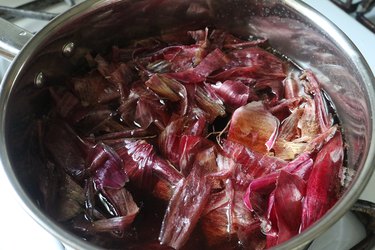
Add onion peels and water to a pot until it's about 3/4 full. Bring mixture to a boil.
3. Add fabric

Add cotton fabric to pot, using tongs to move it around. Simmer for 1 hour, occasionally moving fabric to ensure it's evenly dyed. Turn off the heat, cover pot and let sit for at least 24 hours. Rinse fabric under running water—the color will naturally lighten a bit.
4. Let fabric dry
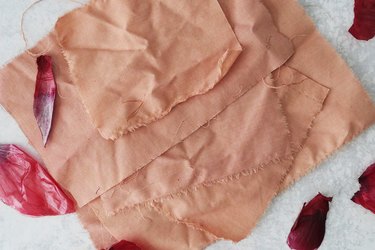
Once the fabric is dry, it's ready to be used in your next craft or sewing project!
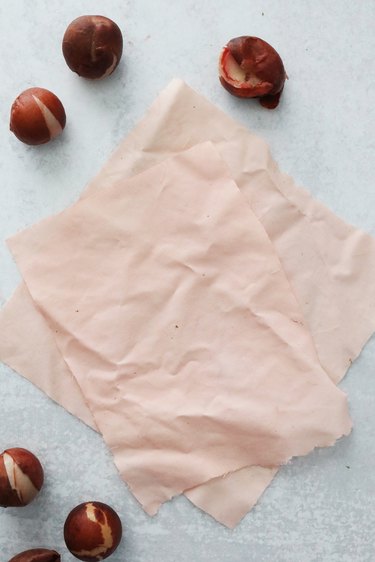
You can also try this technique with avocado pits, which will turn white fabric light pink.
Food Scrap Fabric Dye Science 101
The dyeing ability of red onions has to do with anthocyanins (again!). Anthocyanins give a blue-red-purple color to different fruits and vegetables, including red onions. When you boil red onion peels, anthocyanins are released into the water. Cotton fabric soaks them up, giving it a reddish brown color. Similarly, avocado pits have anthocyanins, but they dye cotton pink. Different food scraps dye fabric different colors depending on their pH.
3. DIY Rock Candy
Things You'll Need
Lollipop sticks or wooden skewers
2 cups water
4 cups granulated sugar, plus more for coating sticks
Candy thermometer
Food coloring
Jars
Clothespins

Warning
Adults should always supervise children when making homemade rock candy. The project requires heating sugar, which can get very hot.
1. Prepare sticks

Sprinkle a thick layer of sugar on a plate. Dip each lollipop stick in water, then coat in sugar. This is called the "seed" stick; the sugar on the stick will give rock candy crystals something to adhere to as they grow.
Set sticks aside to dry.
2. Make sugar syrup

In a pot over medium heat, warm 2 cups of water. Add 4 cups of sugar, one at a time, mixing to dissolve sugar between each addition.
Attach candy thermometer to the pot, making sure the tip doesn't touch the bottom. Simmer sugar solution until it reaches 230°F. Once it reaches the right temperature, remove pot from heat and let cool to 220°F.
Tip
While the syrup is cooling, attach clothespins to sticks and place them in your jars. The clothespins will lay across the jar’s opening and the stick should not touch the bottom of the jar. If it does, simply adjust clothespin as needed. This will limit how much you need to adjust the stick and clothespin later on.
3. Add food coloring
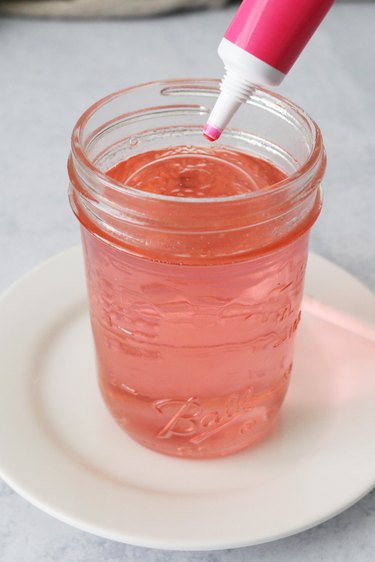
Carefully divide sugar syrup between glass jars. You will likely need three or four jars, depending on their exact size. Add a few drops of food coloring to each jar, then mix well. Let cool for 40 to 50 minutes, or until it's almost at room temperature.
4. Coat sticks in more sugar

Dip sugar-coated sticks in syrup, then coat in another layer of sugar. Let dry about 10 minutes, then repeat one or two more times. This will create thicker "seeds" for sugar crystals to attach to.
5. Place sticks in syrup

Now it's time to let the rock candy grow. Submerge sticks in syrup, resting clothespins across top of jar. You will likely be able to fit two per jar.
Set jars in an undisturbed area for 24 to 48 hours. Check crystal growth every few hours, and pick up the stick to ensure it doesn't attach to the bottom of glass jar. The total time for growing rock candy sticks will depend on how big you want them.
Tip
This rock candy recipe uses more sugar vs. water than other versions, which shortens the growing time. We prefer this approach because jars of sugar syrup are out in the open for less time, so they’re less likely to attract ants and other pests.
6. Remove excess syrup

Once sugar candy is as big as you'd like, remove it from syrup and place in an empty jar. Let sit for 10 to 15 minutes so excess syrup can drip off.
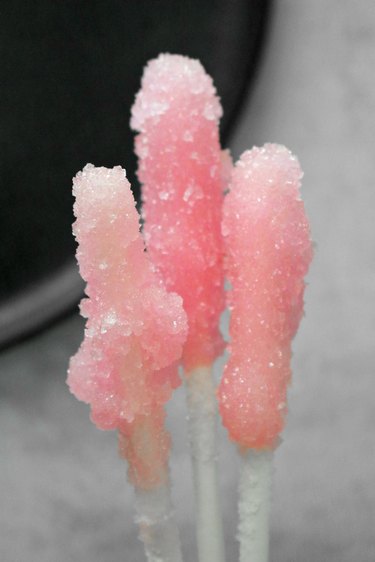
Your rock candy sticks are ready to enjoy! Who knew growing your own rock candy could be so easy?
Rock Candy Science 101
The sugar-water mixture is a supersaturated solution, meaning there’s a lot of sugar compared to water. As the mixture cools and water evaporates, the sugar (aka the solute) “leaves” the solution and attaches to existing “seed crystals” on the stick. Over time, crystals form and the rock candy gets bigger.
With these fun and informative food science projects, your child will be the star of the school science fair—or simply the star of your home kitchen!